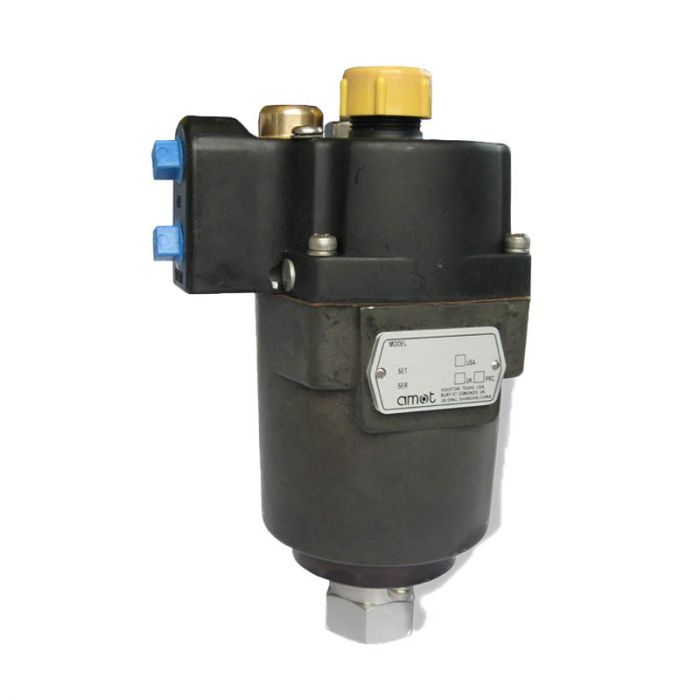4110 Hydro-Mechanical Overspeed Sensing Valve
AMOT Model 4110 Overspeed Sensing Valve provides overspeed protection for engines and rotating equipment. The valve uses a precision flyweight speed sensor to vent a pneumatic or hydraulic signal (via a built-in two-way valve) at a pre-set RPM.
Features/Benefits
-
Dependable protection from overspeed for engines and rotating equipment - reduces risk of engine damage and injury to personnel
-
Available settings from 800 - 4200 RPM in several mounting arrangements - adapts to most popular engine makes and models with ease. Trip setting is field adjustable.
-
Top mounted tachometer drive - can be mounted ‘in-line’ with existing tachometer cable and tachometer
-
May be mounted in any position
-
Factory packed bearings - extends life of equipment
-
Gulfproofed (anodized aluminum) construction - proven corrosion resistance even in offshore environments
-
No electricity required, fail safe - low cost and simple installation
-
Compatible with other AMOT safety control sensors - AMOT provides sole source responsibility for shut down system
| Adjustable range: | 800 - 4200 RPM | |
| Repeatability: | +/- 2% | |
| Body: | Gulfproofed (anodized) aluminum | |
| Internals: | Steel and stainless steel | |
| Seals: | Viton (oil) | Buna N/Nitrile (air) |
| Two-way valve thread: | 1/4” NPT | |
| Flow Coefficient: | Kv = 0.56 | Cv = 0.65 |
| Max. valve pressure: | 5.5 bar | 80 psi |
| Accuracy: | +/- 5% | |
| Mounting thread (std): | 7/8 - 18 heavy duty SAE | |
-
Offshore
-
Gas transmission
-
Oil & gas
-
Construction
-
Marine, oil spill recovery
-
Mining
The Model 4110 Overspeed Sensing Valve uses a precision flyweight speed sensor to vent a pneumatic or hydraulic signal (via a built-in two-way valve) at a pre-set RPM. As the drive shaft is turned by the engine, the weights are forced outwards by centrifugal force and move the spool assembly up the drive shaft against the adjusting arm assembly. When the speed exceeds the preset setpoint, the adjusting arm assembly opens a valve and vents the control pressure. The set point is adjusted by increasing or decreasing the spring pressure with the adjustment screw.





